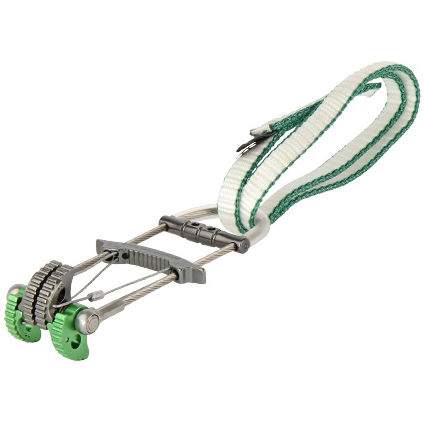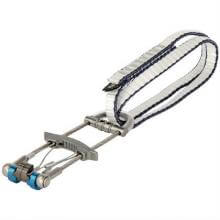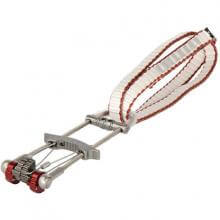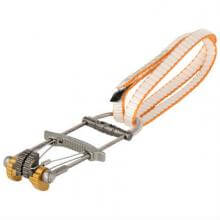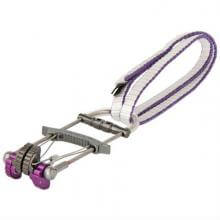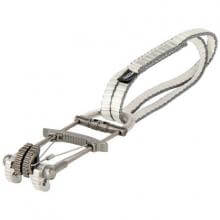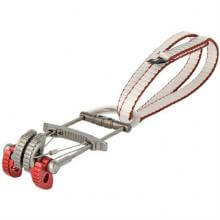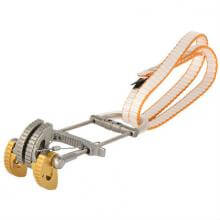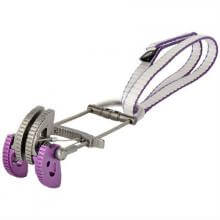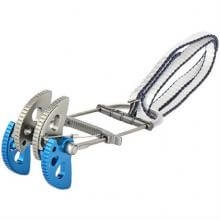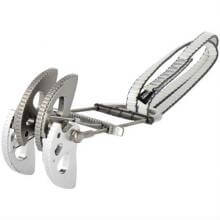4CU 1.75
Description
This top quality lightweight, dual stemmed cam has proved to be very popular, and it is easy to see why. The 4CU is quick and easy to place; it also offers stable secure protection across a variety of crack features.
There are 11 different sizes in the range which fit a huge array of crack shapes and sizes, in fact anything from half an inch (13mm) to a meaty 4 inches (100mm). We have even put in two extra intermediate sizes, 1.25 and 1.75, which slot in between the most commonly used sizes of 1, 1.5 and 2; just what you need for dealing with that awkward crack width that runs between rattley finger jams, to ring locks and on to narrow hand size.
There are lots of interesting technical details which give 4CUs the edge on other double stemmed cams. Some of this might seem a bit techy, but it really will make a difference to how the cam performs at the crag. The free floating, peened axle for example reduces stress and helps to avoid a sheering torque at the point of impact.
The cam lobes work on the original 13.75° camming angle which gives the best balance between holding power and range. And the cam stops allow a (10kN) strength even when placed passively.
As with all of our cam designs, the 4CUs are fitted with double extendable dyneema slings. This means neat storage and quick and easy extension if you need it.
We’ve made the trigger bar free-floating so it can slide on the trigger wires. This reduces wear and tear on the wires and means you won’t have to worry about replacing them each season.
Retail price
This Product is Hard to Find.
We don’t know where you can buy this item online in the US. We’ll continue to check all the major retailers and will update this page as soon as we find one.
If you know where to find this online in the US, let us know, and we’ll add the link.
Weight (g / oz)  Weight (g / oz)In grams and ounces, the weight, as stated by the manufacturer/brand. | 99.0 g / 3.49 oz |
| Cam Head | 4 lobes, single axle |
| Offset | No offset |
| Stem | Flexible double stem |
| Sling | 25 cm Dyneema (double sling loop) |
| Camming Angle | 13.75° |
| Active Strength | 12 kN Single loop strength rating is 12kN and double loop strength rating is 14kN. |
Cam Range (mm / in)  Cam Range (mm / in)In millimeters and inches, the maximum dimensions of the cam lobes when shut tight and fully extended. Since the "usable" range is so debatable, all manufacturers now list the full dimensions to avoid selling themselves short. For offset cams, we'll list the max dimensions possible and then afterwards list each of lobe dimensions. | 25.0 - 41.0 mm (0.98 - 1.61 in) |
| Materials | |
| Certification | CE, UIAA |
No reviews yet.
So, to summarise, 4CUs are an excellent choice for someone looking for a versatile, lightweight and easy to use camming device. They have been my choice of cam for many years and while I have used most of the other brands on the market, I always reach for my trusty 4CUs when I rack up for a tricky route.
They do what it says on the tin. Not exciting exactly but then as much as I might get excited by cams in the shop, when I'm climbing I want them to quietly go about their business without fuss. They do exactly that and are solid and dependable. I could wish that the triggers were a little longer on the smaller sizes to give more reach into deep placements but that is a relatively minor complaint. I also found the double stem can be awkward in a tiny minority of constricted placements but it was very rare and wouldn't stop me choosing 4CUs. I checked all the cams in this review for use with gloves and mitts for winter climbing and the 4CU was slightly harder to use with my gloves on but, oddly, the only one I could reliably use wearing mitts. To cover a range from 19-100mm you would have 7 units weighing a total of 983g
Summary: The most noticeable thing about the DMM 3CUs and 4CUs are their bright colors, which makes picking the correct size from a crowded rack a breeze. Each unit's cam lobes, trigger bar, and thumb bar are anodized to match, and, yes, the doubled sling blends right in too. The trigger bar allows for a bit of independent cam manipulation -- rare on a U-stem unit. Another unique feature are the cam lobes (with integrated cam stops), which are wide when fully retracted and taper to a more standard width near the end of their range. When the cam is placed tightly, there is more cam surface against the rock for greater grip -- great for parallel cracks, but if the crack is flared or irregular the cams will sit awkwardly. Another drawback is the trigger bar's tendency to slide up the trigger wires toward the head. The extra step of pulling the trigger back into position is easy, but a burden on pumpy routes.
Pros: Extendable sling; trigger bar allows for some independent cam action; great color coding; cam stops; light.
Cons: Poor performance in flared or awkward placements; trigger bar slides down.

